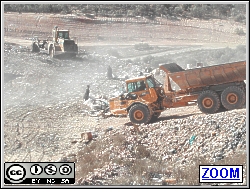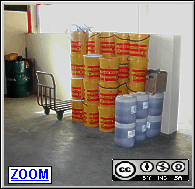 |
| Module 1: Occupational Hygiene - Section 1: Introduction to Occupational Hygiene |
| OH1.2: Health and Safety Hazards |
 |
| Module 1: Occupational Hygiene - Section 1: Introduction to Occupational Hygiene |
| OH1.2: Health and Safety Hazards |
Occupational hygiene constitutes one of the 3 main elements of occupational health, the others being occupational medicine. and occupational safety.
Occupational Hygiene is defined by the American Industrial Hygiene Association as:
"that science and art devoted to the identification, evaluation and control of those environmental factors or stresses, arising in or from the place of work, which may cause illness, impaired health and well being, or significant discomfort and inefficiency among workers or among citizens of the community."
In simple terms, occupational hygiene is concerned with prevention of workplace diseases and ill health through anticipation, identification, evaluation and control of health hazards.
There are a number of potential hazards in most workplaces. A hazard is a situation or a condition that can potentially cause an injury or illness in workers or damage to property. Hazards can be divided into either safety or health hazards.
Some workplace hazards can be both health and safety hazards. For example, a worker who unintentionally spills acid on him or herself will cause damage to the skin due to corrosive nature of acid. Some of the acid will be absorbed through the skin and transported by the blood to a target organ where damage to health is caused.
Health hazards can be divided into five main groups. These are
| Chemical hazards arise from excessive airborne concentrations of mists, vapours, gases or solids in the form of dusts, fumes and fibres.(For example pesticides used in agriculture). |

|
| Physical hazards include exposure to vibration, radiation, noise, hot
or cold environments. Play this videoThis video clip illustrates a factory area where the noise level is so high that normal speech is inaudible. |
|
 |
Biological hazards include organisms or toxic substances produced by living
things that can cause illness or disease in humans. Examples are bacteria, fungi,
parasites and insects. Play this video clip The contents of seemingly innocuous flour such as insect pests can be a biological hazard, in this case, causing dermatitis to a worker. |
Ergonomic hazards include design of workplaces and jobs that involve repetition, force or awkward posture. |
|
Psychological hazards represent an important group and include occupations that might endanger the mental health of workers. |
|